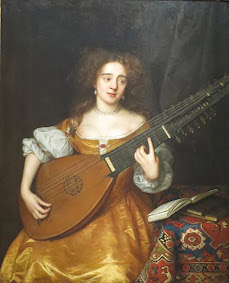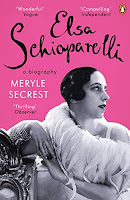Author introduced great American writers to Fascist Italy
Cesare Pavese, the writer and literary critic who, through his work as a translator, introduced Italy to the Irish novelist James Joyce and a host of great American authors of the 20th century, was born on this day in 1908 in Santo Stefano Belbo, a town in Piedmont about 60km from Turin. Pavese would become an acclaimed novelist after the Second World War but was frustrated for many years by the strict censorship policies of Italy’s Fascist government. It is thought he devoted himself to translating progressive English-language writers into Italian as the best way by which he could promote the principles of freedom in which he believed. Pavese’s translations would have given most Italians they first opportunity to read writers such as Herman Melville, William Faulkner, Charles Dickens, Gertrude Stein, John Steinbeck, John Dos Passos and Daniel Defoe, as well as Joyce, who would ultimately spend many years living in Italy. The son of Eugenio Pavese, an officer of the law courts in Turin, Cesare had a fractured childhood. His father died when he was only six and his mother, Consolina, is said to have shown him little affection. Read more…
_________________________________________
Understated midfielder who helped AC Milan win six Serie A titles
The footballer and coach Roberto Donadoni, who was a key figure in an AC Milan side that dominated Italian football for the best part of a decade, was born on this day in 1963 in Cisano Bergamasco in Lombardy. A winger or midfielder famed for his ability to create goalscoring opportunities for his team-mates, Donadoni was once described by the brilliant French attacker Michel Platini as ‘the best Italian footballer of the 1990s’. His collection of 21 winner’s medals includes six for winning the Serie A title with AC Milan and three for the European Cup or Champions League. He was also part of the Italian national team that reached the final of the World Cup in 1994, losing to Brazil on penalties. Donadoni was never a prolific goalscorer: in more than 500 league and international matches, he found the net only 34 times. Yet he had exceptional technical ability and great passing skills and if tallies of ‘assists’ in matches had been recorded during his career as they are now, the role he played in Milan’s success in particular would be appreciated still more. Since ending his career as a player, Donadoni has totted up 450 matches as a coach, taking charge at seven clubs in Italian football and one in China, as well as having a stint as head coach of the national team. Read more…
________________________________________
Operation that marked start of invasion of Italy
The first wave of an invasion force that would eventually take control of much of the Italian peninsula on behalf of the Allies landed on the beaches around Salerno in Campania on this day in 1943. More than 450 ships carrying 190,000 troops assembled off the coast on the evening of September 8, shortly after news had broken that terms for the surrender of the Italian half of the Axis forces had been agreed. The US 36th Infantry Division were in the vanguard of the invasion force, approaching the shore at Paestum at 3.30am on September 9, and there were other landings further up the coast near Battipaglia and Pontecagnano involving British troops. After news of the Italian surrender, the invasion force, which consisted initially of 55,000 troops, were unsure how much resistance they would encounter. A decision had been taken not to launch a naval or aerial bombardment in advance of the invasion, in the hope that it would take the enemy by surprise. In fact, the Germans were well prepared and even as the first landing craft approached Paestum, the American soldiers on board were greeted with a loudspeaker announcement from near the beach in English, urging them to give themselves up. Read more…
______________________________________
Devout lawyer served the Republic all his life
The ninth President of the Italian Republic, Oscar Luigi Scalfaro, was born on this day in 1918 in Novara. After studying law and entering the magistrature he became a public prosecutor and is the last Italian attorney to have obtained a death sentence. In 1945 he prosecuted the former Novara prefect Enrico Vezzalini and five servicemen, who were accused of collaborating with the Germans. All six were condemned to death and the sentence was carried out a few months later. Subsequently Scalfaro obtained another death sentence, but the accused was pardoned before the execution could take place. Scalfaro was brought up to be a devout Catholic and studied law at Milan’s Università Cattolica. Before the war ended he lost his wife, Maria Inzitari, who died a few weeks after giving birth to their daughter. He never remarried. In 1948, as a member of Democrazia Cristiana, Scalfaro became a deputy representing Turin and was to keep the seat for more than 40 years, during which he held a number of leadership positions within the Christian Democrat party and in the Chamber of Deputies. Read more…
_____________________________________
Famous for portraits of wealthy and famous
The American-based director and photographer Francesco Carrozzini was born on this day in 1982 in Monza, Italy. The son of the late former editor-in-chief of the Italian edition of Vogue magazine, Franca Sozzani, Carrozzini has directed many music videos and documentary films and a small number of feature-length movies, including one about the life of his mother. In photography, he has become best known for his portraits of the rich and famous, including actors such as Robert De Niro and Cate Blanchett, models including Naomi Campbell and Linda Evangelista, musicians such as Lana Del Ray and Kanye West, and artists including Jeff Koons and Andres Serrano. Carrozzini has also photographed a number of political leaders, including the former British prime minister Tony Blair, ex-Mayor of New York Michael Bloomberg and former United Nations Secretary General Ban Ki-moon. He is a founder of the Franca Sozzani Fund for Preventive Genomics, which he helped create following the death of his mother at the age of 66 from a rare form of cancer. Franca Sozzani’s prominence in the fashion and magazine industry meant that Carrozzini grew up in a house he described as being filled with creative energy. Read more…
______________________________________
Twenty years after making his fortune in America, Eel is drawn back to the closest thing he has to a home: the Piedmontese countryside where he grew up poor and illegitimate. Wandering the valleys and vineyards with his childhood friend Nuto, Eel remembers the farm where he worked, his employer's beautiful daughters, the rituals of rural life. Yet as he discovers more about what happened there during the war, he realizes that these timeless landscapes hide terrible, savage secrets. By turns fond and evocative, seductive and troubling,
The Moon and the Bonfires, translated and with an introduction by the English novelist Tim Parks, is a lyrical masterpiece of memory and betrayal.
Cesare Pavese was born in 1908 in Piedmont. He worked as a translator and as an editor for the publishing house Einaudi Editore, while also publishing his own poetry and a string of successful novels, including The House on the Hill and The Moon and the Bonfires. Tim Parks was born in Manchester but has lived in Italy since 1981. As well as writing 19 novels and nine non-fiction books, he has translated works by Moravia, Pavese, Calvino, Calasso, Machiavelli and Leopardi.
Buy from Amazon

Home
.jpg)

_wooden_model.jpg)

.jpg)




.jpg)
.jpg)



%20(1).jpg)

.jpg)


.jpg)

.jpg)



.jpg)





